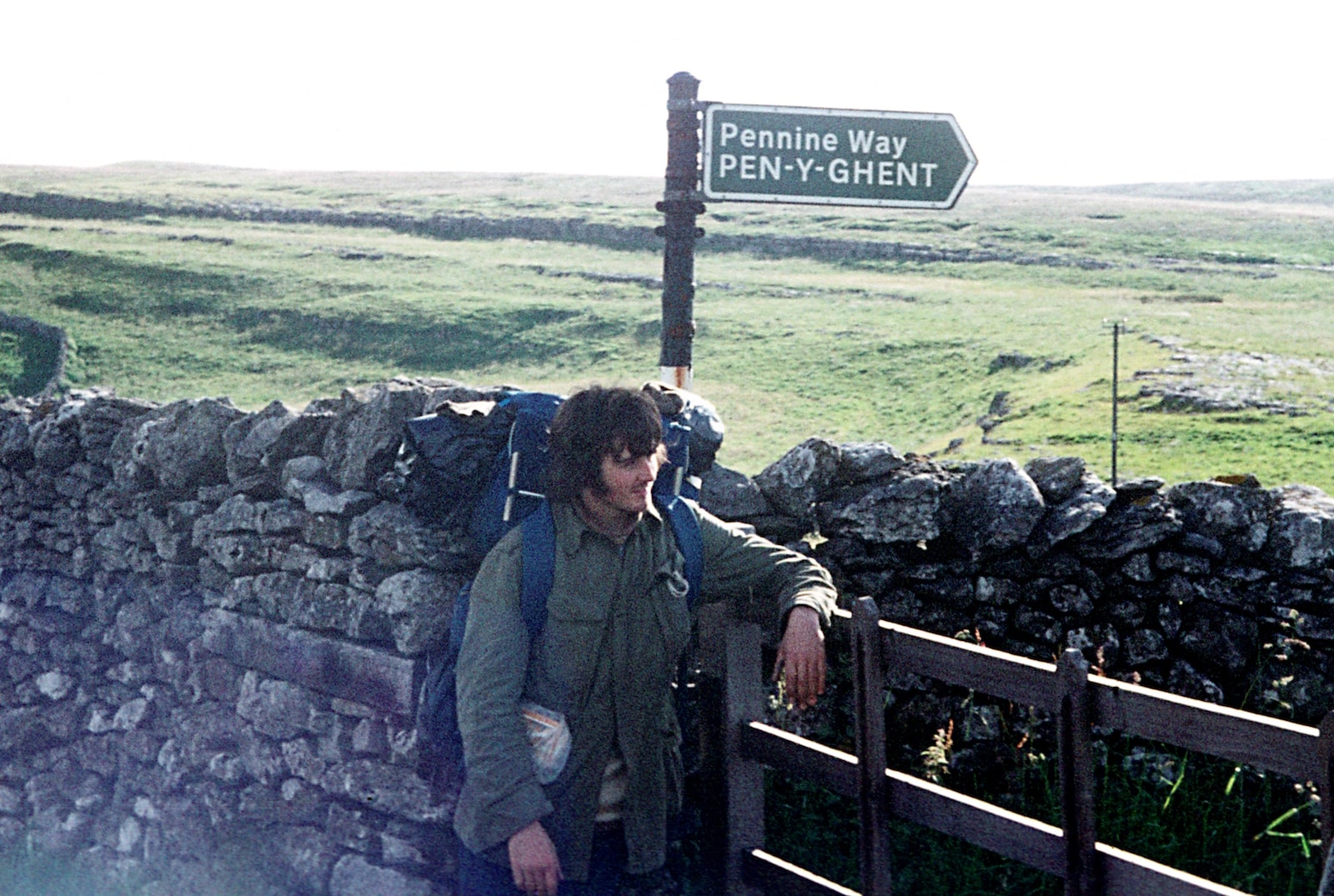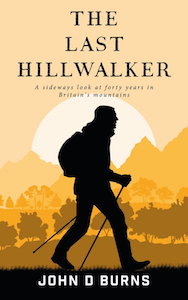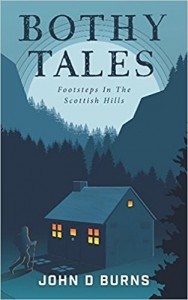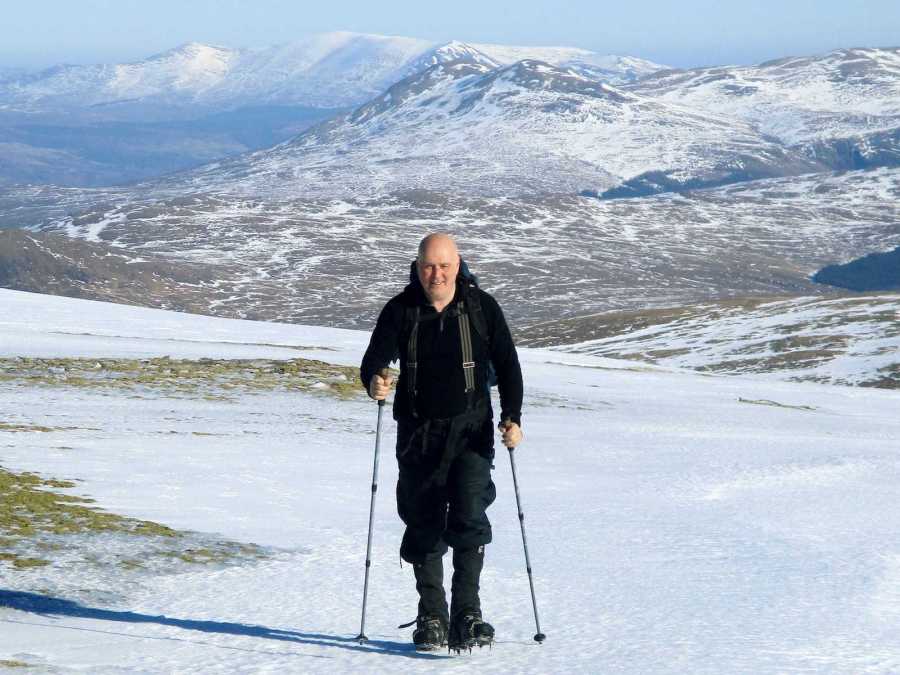We chat with outdoor writer John Burns, who is on a mission to capture and celebrate mountain and bothy culture in a changing world
Hillwalking culture is a difficult thing to pin down. Is it the act of slogging uphill in the mud and rain? The freedom from knowing only your own skill and wits will get you down safely? Or perhaps it’s the fact that technology and regulation have been slow to penetrate our uplands? While change is inevitable, and not all of it bad, outdoor writer John Burns believes that it’s important to look back even as we look forward.
We chatted with John about his books, why bothies are special, and why some have come to believe that hillwalking is becoming a pastime with an increasingly middle-aged demographic.
Some of our readers will recognise you from your entry in our 2017 Reader Awards. Your first book, The Last Hillwalker, was nominated and then shortlisted for Outdoor Book of the Year, and has attracted a lot of interest from the hillwalking public. Tell us a bit about yourself – what’s your background, and why did you decide to write about your life in the hills?
I’m originally from Merseyside, and began hillwalking in the Lakes and Snowdonia. Inevitably I was drawn to the wild and remote areas of Scotland, and moved to the Highlands in my late twenties to pursue my interest in climbing and hillwalking. I fell in love with the Scottish hills when I came here and they became a huge part of my life.
Oddly, writing The Last Hillwalker was a way of saying goodbye to that part of my life. I’d decided to move on to other pursuits, like acting, but somehow I just couldn’t walk away from the hills without saying goodbye. I thought writing Hillwalker would be a way of closing the door to the hills. But that’s not what happened. My writing took me back into the hills and I travelled again amongst the mountains of my memory. I experienced again the excitement and joy I’d found in the uplands, and that drew me back to them once more. Now I spend as much time as I ever did amongst the hills.

John on the Pennine Way in 1974
The Last Hillwalker starts from the premise that the mountains are increasingly the playground for older generations, and that younger people are often absent from the hills – or, at the very least, they tend to enjoy them in different ways. When do you think you first started noticing this trend, and how do you think younger people can be tempted back?
I was absent from the hills for over two years, and when I returned I looked at them with fresh eyes. It was then that I noticed things had changed. Most of the folk I met were my age and there just didn’t seem to be as many younger folk about.
“Above all I wanted to write about what it felt like to be in the mountains, with the rain on your face and the snow beneath your boots”
My generation experienced an explosion of hillwalking in the 70s and 80s. Back then, every time I went on the hills I saw more and more folk, mostly in my age group; it felt as though the tidal wave of walkers would never end. I just don’t see that number of younger people coming into the hills, and I wonder what will happen when my generation of mountain-goers dies out. Will there be another generation to replace us in such numbers, or will our mountains become forgotten?
 I think some of the barriers to younger people are economic. I was a baby boomer – my generation had it easy. I got a grant to go to uni, and there were jobs for life. Now younger folk have more pressure on their lives. Most students have to get a job to get by, and what jobs there are don’t pay as much, and are often less secure. There are cultural changes too. We live in a risk-averse society and it’s much more difficult for young people to experience the outdoors as children away from adult support.
I think some of the barriers to younger people are economic. I was a baby boomer – my generation had it easy. I got a grant to go to uni, and there were jobs for life. Now younger folk have more pressure on their lives. Most students have to get a job to get by, and what jobs there are don’t pay as much, and are often less secure. There are cultural changes too. We live in a risk-averse society and it’s much more difficult for young people to experience the outdoors as children away from adult support.
I think this all means it’s a bit more difficult to make your first steps outdoors. There are just so many other things to do – I hear you can play games on computers now!
How have you found the response to the book from the outdoor community?
The response has amazed me. I’ve been really moved by the things people have said, and I now have over a hundred 5-star reviews on Amazon. People tell me that I have told their stories in the outdoors, and I think in some way I have spoken for a generation. I wanted to write the story of the average mountaineer, not the elite, and I think I’ve done that.
Recently I received some great feedback from mountaineering author and biographer Peter Gillman, who said “John’s journey gains momentum as it progresses and has elements of suspense and an affecting denouement that had me close to tears. It has stayed strong in my memory.”
Above all I wanted to write about what it felt like to be in the mountains, with the rain on your face and the snow beneath your boots. I wanted to take the reader along with me. Quite a lot of readers have said how my books have encouraged them to get back out into the hills, and if I’ve achieved that I’ll be very satisfied.
All of us have had adventures, and for my generation it was a key part of our lives – a rite of passage – and that’s important.
Bothies were particularly important to your generation in the hills, partly because lightweight camping gear didn’t exist or was unaffordable for most, but there are other reasons too. Your new book, Bothy Tales, takes us into that culture and shows us that there’s much more to a bothy than four walls and a roof. At what point did you realise there was potential for a second book all about bothies?
Bothy Tales is really about the sort of stories folk tell in bothies – places where people relate to each other differently. They’re havens where you can get away from the ever-present computer screen or smartphone. It’s a simpler way of life and I wanted to capture something of that culture before we all get swept away in a tidal wave of technology and risk assessment.
“I think it likely that our time in the hills will become more regulated”
If you camp in the hills, you camp alone; if you go into a bothy you are part of a small community, even if only for one night. There’s a big difference. Bothy Tales tries to capture what it’s like to sit around a bothy fire in some remote, dark glen, and swap stories and tell tall tales. I worry we’ll lose connection with this culture and I wanted to capture it.
 And how resilient do you think bothy culture is proving to be against the rapidly changing world of outdoor pursuits? Do you think there is a risk of bothies becoming increasingly commercialised?
And how resilient do you think bothy culture is proving to be against the rapidly changing world of outdoor pursuits? Do you think there is a risk of bothies becoming increasingly commercialised?
The only thing we can know for certain is that things will change. I don’t think you can expect the huge changes that society is undergoing will sweep past bothies and leave them unchanged. I think it likely that our time in the hills will become more regulated – tracking device and so on, which many voluntarily use now – and it won’t be too long before some bothies will be the preserve of organised groups.
Look how much technology has already changed the world. I can’t even imagine what is to come. Many things that were science fiction only 20 years ago are common now – although I’m not against technology, as I couldn’t publish the kind of books I do without it. I think the challenge is for us to control it and not let it control us.
On the plus side, maybe your book will inspire some curious newcomers to head out for their nearest bothy. What do you think is your favourite story in the book, and why?
I like The Yellow-Eyed Bird of Glen Dubh-Lighe the best – a surreal story about bothy culture fighting back against the tide of techno control, with a generous dollop of humour on the side. I like the thought of a Google robot buried somewhere in a glen beeping away.
And which is your favourite bothy in Scotland – or is it one of the secret ones we aren’t allowed to talk about?
My favourite is the one I’m in at any given time. Once you light the fire and sit there in the candle light the rest of the universe drifts away and you’re in your own little world.
And your book sums up that feeling very well. Now that Bothy Tales is out there and being enjoyed by readers, what can you tell us about your future writing plans?
Currently, I’m working on audiobook versions of both titles, but I have lots of ideas for future projects jostling in my head. My books have featured near-death experiences; I think I’ll steer clear of those. It might be fun to do some more long-distance footpaths and take a not-too-serious look at them, or I might write about some of the really iconic bothies and try to capture as much of this culture as I can while it lasts. Then again, I am pining for a fantasy novel set in the mountains…

Find out more about what John’s up to on his website, johndburns.com.
Full disclosure: Alex Roddie, who wrote this feature, edited both of John’s books and continues to work with him. However, he receives no financial compensation after the books have been published.








